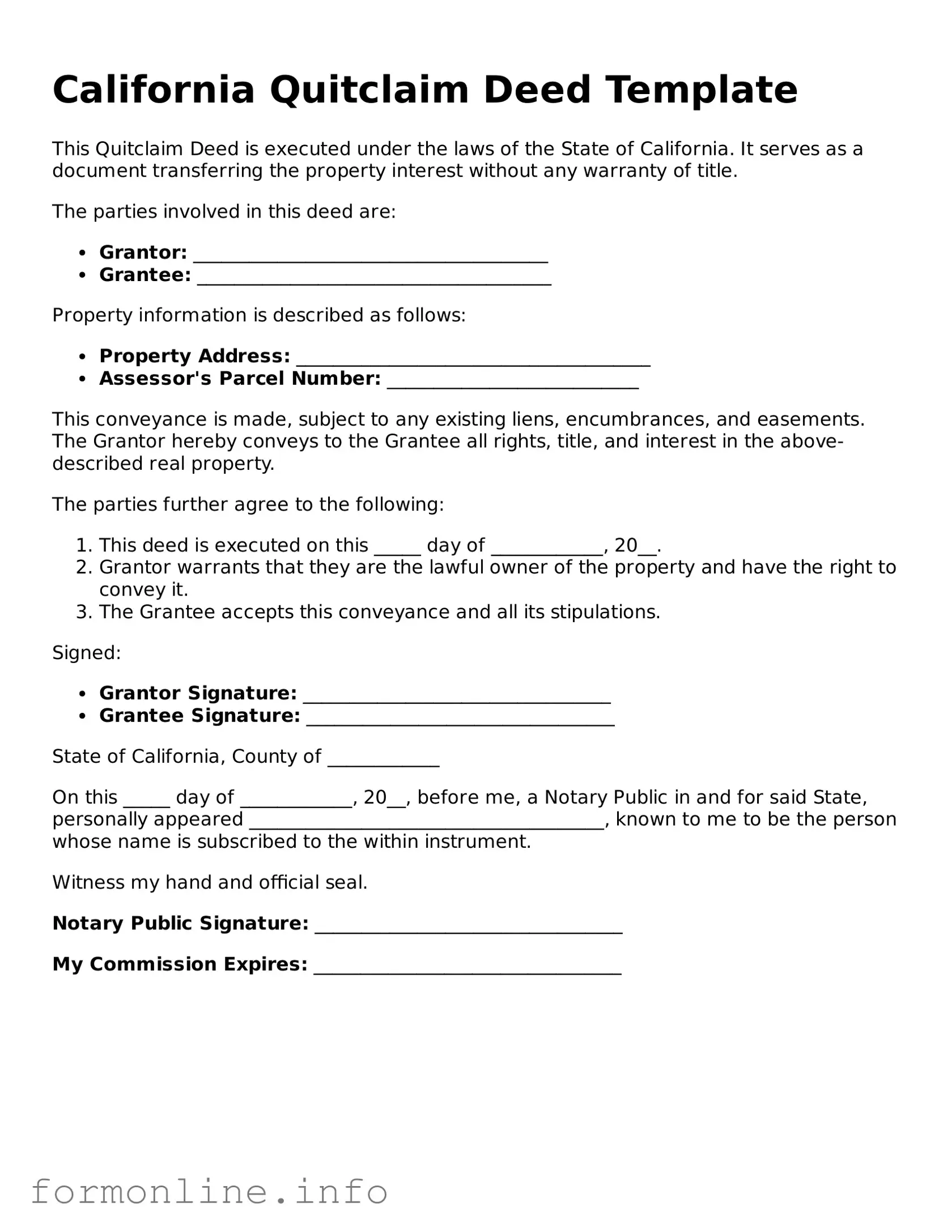California Quitclaim Deed Template
This Quitclaim Deed is executed under the laws of the State of California. It serves as a document transferring the property interest without any warranty of title.
The parties involved in this deed are:
- Grantor: ______________________________________
- Grantee: ______________________________________
Property information is described as follows:
- Property Address: ______________________________________
- Assessor's Parcel Number: ___________________________
This conveyance is made, subject to any existing liens, encumbrances, and easements. The Grantor hereby conveys to the Grantee all rights, title, and interest in the above-described real property.
The parties further agree to the following:
- This deed is executed on this _____ day of ____________, 20__.
- Grantor warrants that they are the lawful owner of the property and have the right to convey it.
- The Grantee accepts this conveyance and all its stipulations.
Signed:
- Grantor Signature: _________________________________
- Grantee Signature: _________________________________
State of California, County of ____________
On this _____ day of ____________, 20__, before me, a Notary Public in and for said State, personally appeared ______________________________________, known to me to be the person whose name is subscribed to the within instrument.
Witness my hand and official seal.
Notary Public Signature: _________________________________
My Commission Expires: _________________________________
